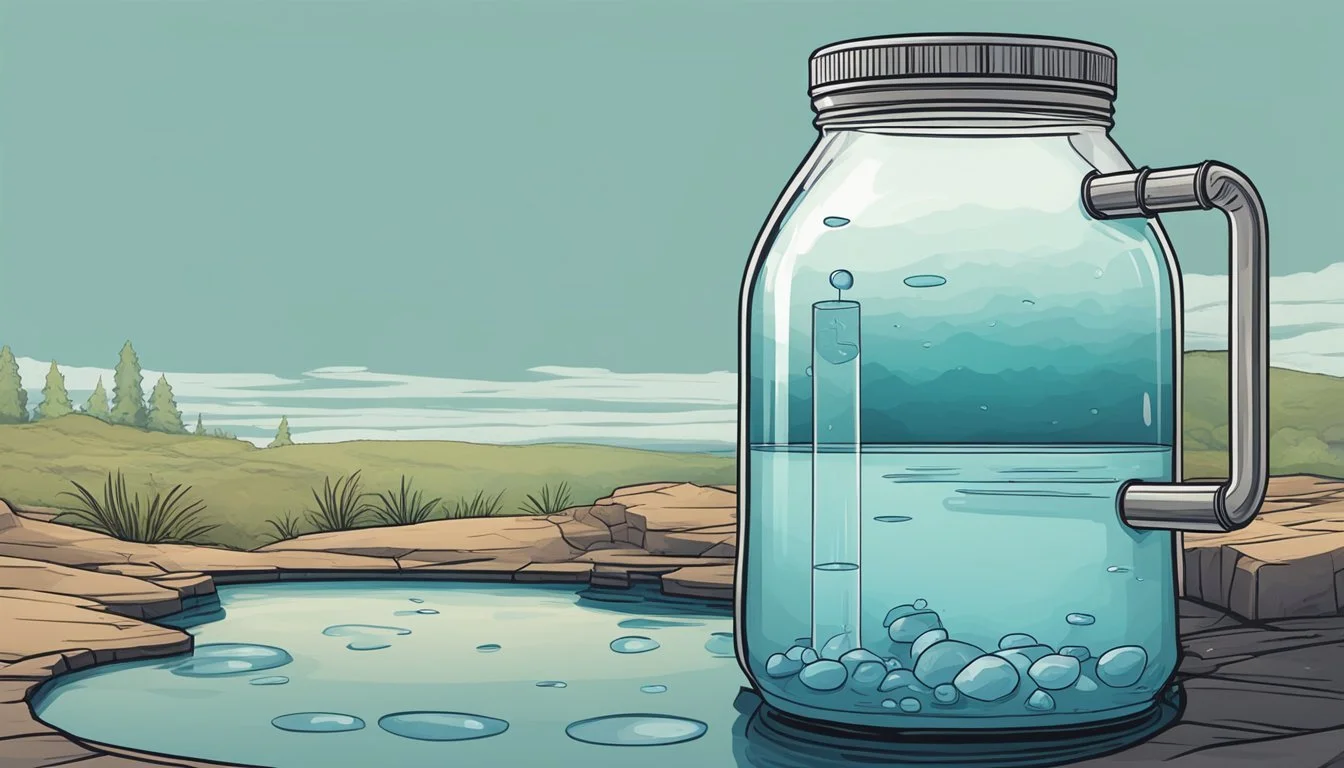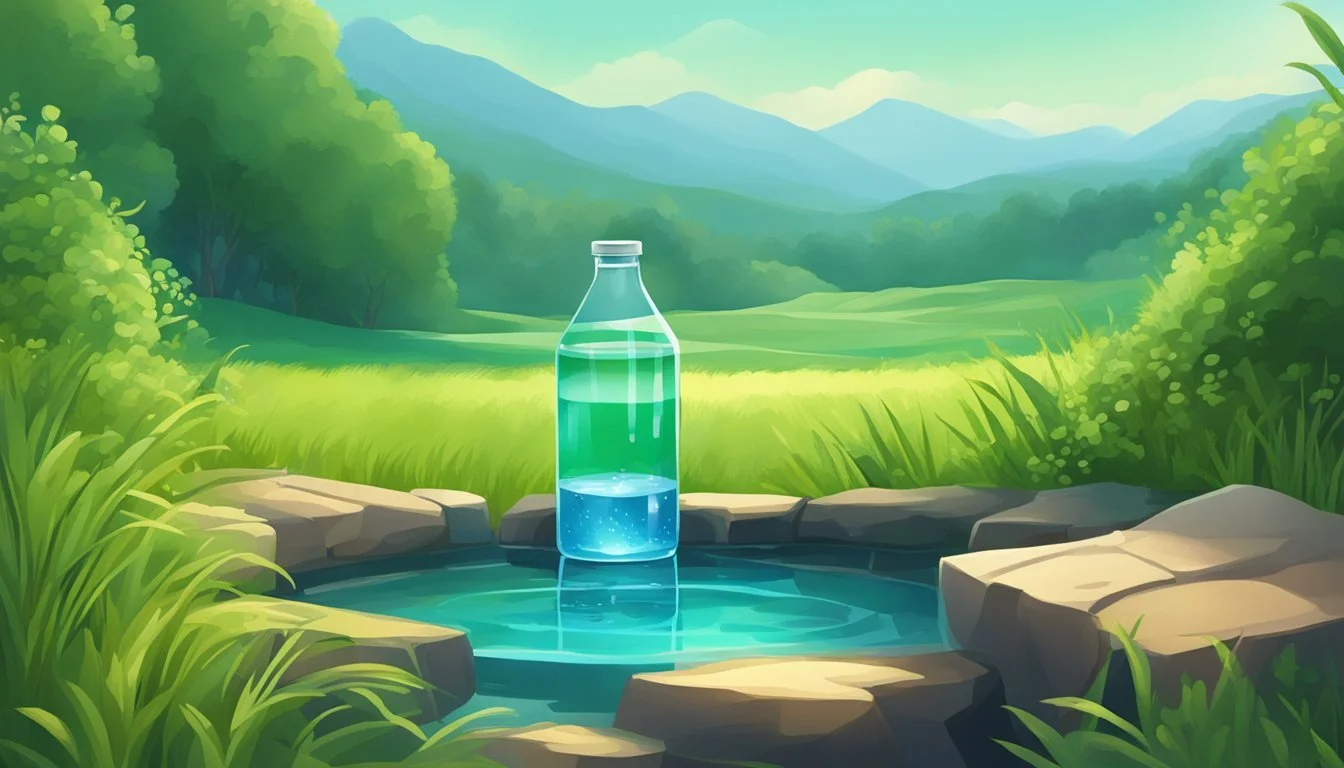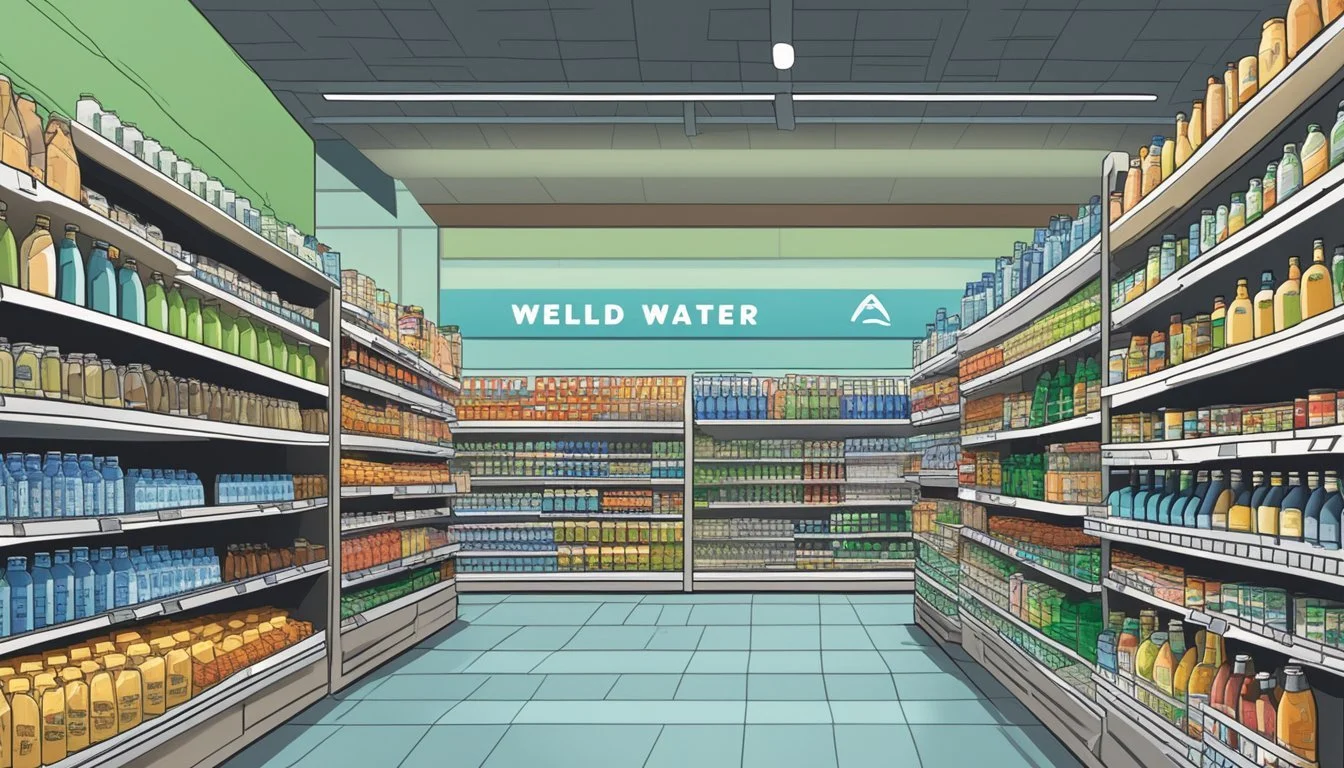The Well vs. Weird Water
Comparing Bottled Water Quality
When it comes to choosing bottled water, consumers often find themselves at a crossroads: the dependable quality of brands like Well or the distinctive character of Weird Water. Each brand has its loyal following, but which one truly stands out in terms of water quality and taste?
Well's bottled water is sourced from underground aquifers and naturally filtered by the earth, offering a purer and often more mineral-rich drinking experience. Meanwhile, Weird Water appeals to those seeking something different, boasting a unique taste profile that sets it apart from mainstream options. This battle between conventional purity and quirky flavor keeps the debate alive among water enthusiasts.
With so much at stake in what seems like a simple choice, understanding the nuances between these two brands can significantly impact your daily hydration. Dive in as we explore the merits and potential drawbacks of Well and Weird Water, helping you make an informed decision for your drinking water needs.
Exploring Water Sources
Various sources of bottled water, including well water, spring water, and municipal water, possess distinct characteristics and benefits. Each type offers different qualities based on its origin and treatment process.
Well Water Characteristics
Well water is derived from groundwater sources, typically accessed via wells drilled deep into the earth. It is less exposed to surface pollutants and often contains minerals naturally leached from the soil.
Key Points:
Originates from aquifers beneath the earth's surface.
Typically rich in minerals like calcium and magnesium.
Can vary significantly in taste depending on the local geology.
Requires regular testing to ensure it meets Environmental Protection Agency (EPA) safety standards.
Sometimes treated with filtration systems to remove contaminants.
Spring and Artesian Water Insights
Spring water comes from natural springs where groundwater naturally flows to the surface. Artesian well water is under natural pressure, allowing it to reach the surface without pumping.
Key Points:
Spring Water:
Naturally filtered through rock layers, picking up minerals.
Often preferred for its crisp and pure taste.
Artesian Water:
Comes from confined aquifers, accessed through artesian wells.
High in natural pressure, pushing the water upwards.
Both types are subject to natural variations in mineral content and taste. Quality is dependent on source protection and potential pollutants in the environment.
Municipal Water Overview
Municipal water, often called tap water, is sourced from lakes, rivers, or reservoirs and treated to remove impurities. It is strictly regulated to ensure safety for public consumption.
Key Points:
Regulated extensively by the EPA, ensuring stringent safety standards.
Undergoes treatment processes such as chlorination and filtration to eliminate contaminants.
May contain added substances like fluoride for dental health benefits.
Readily available and usually cheaper than other bottled water sources.
Quality and taste can vary based on local treatment facilities and source water quality.
Each water source offers unique attributes that cater to different preferences and needs, whether it's the mineral richness of well water, the natural purity of spring and artesian water, or the regulated safety of municipal water.
Water Quality and Safety Analysis
When comparing The Well and Weird Water, evaluating water quality and safety is critical. This analysis covers contaminants, mineral content, and compliance with regulations.
Contaminant Profile
Both bottled water brands prioritize removing contaminants like bacteria, lead, and harmful chemicals. Consumer Reports highlights variations in contamination levels among bottled water brands. The Environmental Working Group (EWG) advises consumers to be aware of different contaminants, emphasizing the importance of choosing brands with low levels of toxic chemicals and heavy metals. Testing should identify any traces of known contaminants, ensuring they meet FDA and Safe Drinking Water Act standards for safe drinking.
Mineral Content Classification
Mineral content in bottled water influences taste and health benefits. The Well claims a balanced mineral content, suitable for daily hydration. It includes essential minerals like calcium and magnesium. Weird Water, on the other hand, positions itself as high in electrolytes, beneficial for athletic performance. Consumers should compare labels to understand the mineral differences. It is crucial to note any significant levels of iron or other elements that might affect flavor or health suitability.
Regulations and Standards Compliance
Both brands adhere to FDA regulations and the Safe Drinking Water Act standards to ensure safe drinking water. They undergo regular testing to meet these requirements. The Well sources from protected aquifers, ensuring purity from the source. Weird Water, renowned for its purity processes, applies stringent filtering techniques. These practices ensure high compliance with safety regulations, assuring consumers of the brands' commitment to delivering safe and quality bottled water.
Health Implications of Water Consumption
Consuming clear and clean water significantly impacts individual health. While hydration benefits are crucial, there are potential ailments linked to impurities such as metals and microorganisms.
Water and Hydration Benefits
Adequate hydration is vital for maintaining optimal body functions. Water aids in regulating body temperature, removing waste, and supporting metabolic processes. Hydrated skin looks healthier, and proper hydration helps in digestion and nutrient absorption.
Calcium in water contributes to bone health. Sodium, often present in bottled water, assists in maintaining fluid balance. Fluoride, commonly added to drinking water, can help prevent dental cavities. It is crucial to recognize these benefits as hydration supports overall health and well-being.
Potential Risks from Metals and Microorganisms
Bottled water can occasionally harbor metals like lead and mercury, which pose serious health risks. Long-term exposure to these metals may impair the liver and kidneys and increase cancer risks.
Microorganisms, including bacteria and viruses, may contaminate water sources. Although chlorine treatment aims to eliminate these pathogens, some bottled water lacks adequate regulation. Ingesting contaminated water can lead to gastrointestinal problems, infections, and other health issues. Monitoring and ensuring water quality is vital to avoid these dangers.
Comparative Taste Analysis
The taste profiles of The Well and Weird Water differ significantly, influenced by their mineral content, texture, and pH levels. Taste tests, whether blind or scientific, reveal distinct preferences among consumers.
The Role of Minerals in Water Taste
Mineral content greatly influences the taste of bottled water. The Well is noted for its high mineral content, which contributes to a richer, more complex flavor. Key minerals like calcium and magnesium can create a slightly sweet or metallic taste.
Weird Water, with a more balanced mineral profile and a pH level of 7.0, presents a cleaner, crisper taste. The presence of minerals in these waters not only affects taste but also the perceived texture or mouthfeel, often described as soft or hard.
Blind Taste Test Findings
Blind taste tests reveal preferences based on subtle taste differences. In trials, The Well often appeals to those who prefer a mineral-rich taste, with its layered flavors standing out. Those accustomed to European waters might favor its complex profile.
Weird Water, on the other hand, scores high among participants seeking a neutral, refreshing taste. Its balanced pH and moderate mineral content make it a versatile choice, satisfying a broader range of palates.
Flavored Versus Natural Water Experience
Natural versus flavored water offers different experiences. Weird Water is positioned as a natural, refreshing option without added flavors, focusing on its pure, unadulterated taste.
The Well, primarily marketed as a natural water, can occasionally include slight natural flavor undertones due to its mineral composition. Consumers looking for straightforward hydration might lean towards Weird Water, while those appreciating nuanced natural tastes may prefer The Well.
Comparing these elements provides insight into consumer preferences and highlights the unique attributes of each brand.
Packaging and Environmental Concerns
When choosing bottled water, it's essential to consider the impact of packaging and the environmental ramifications associated with it. The focus here is to examine the pollution caused by plastic bottles and explore eco-friendly alternatives.
Plastic Bottles and Pollution
Plastic bottles significantly contribute to environmental pollution. Energy consumption during production and the resultant CO2 emissions are high. For instance, producing 50 oz of bottled water releases between 1.6 and 22 oz of CO2. The extensive use of plastic bottles generates significant landfill waste.
Each plastic bottle can take centuries to decompose, and the sheer volume of discarded bottles overwhelms waste management systems. Additionally, plastic bottles can contain nanoplastics, with studies showing up to 240,000 plastic fragments per liter. This not only impacts the environment but also raises health concerns.
Eco-Friendly Alternatives
Several brands are adopting eco-friendly packaging to mitigate environmental impacts. Transitioning to lighter-weight plastics and using fewer natural resources helps reduce the plastic footprint. Some companies have reduced plastic usage in their bottles by an average of 27 percent.
Reusable water bottles made from materials like stainless steel or glass offer a viable alternative. Tap water in reusable bottles significantly lowers the environmental impact compared to single-use plastic bottles. Utilizing eco-friendly packaging can substantially reduce waste and carbon emissions.
Convenience and Consumer Preferences
Consumers choose bottled water based on its convenience and their personal preferences. Availability, accessibility, and pricing are key factors in their decisions.
Availability and Accessibility
The Well and Weird Water are both widely accessible. The Well prioritizes availability by ensuring its presence in both urban and rural markets. It can be found in major retail stores, convenience shops, and even local grocery markets.
Weird Water, with its niche market appeal, is mostly available in specialty stores and online platforms. This brand may not be as easily accessible for consumers who rely on local stores for their daily purchases. Its unique mineral composition and branding often attract a specific demographic, limiting its stock in everyday outlets.
Both brands use strategic distribution channels to reach their target audiences. While The Well capitalizes on mass distribution, Weird Water focuses on selective availability to maintain its premium image.
Price and Affordability Factors
When it comes to pricing, The Well offers competitive rates that cater to a broad audience. Its affordability makes it a go-to choice for many families and individuals who consume bottled water regularly.
On the contrary, Weird Water positions itself as a premium product. Its pricing reflects the brand's emphasis on unique mineral content and exclusive production methods. This can make it less accessible to budget-conscious consumers but appealing to those willing to spend more for perceived health benefits.
Both brands present pricing strategies that reflect their market positions. The Well’s affordability helps it achieve wide reach, while Weird Water's premium pricing aligns with its selective marketing approach.
Filtration and Purification Processes
Understanding how water is filtered and purified is crucial to determining its safety and quality. This section covers the key methods used in home, industrial, and bottled water purification.
Home Filtration System Efficiency
Home filtration systems offer various solutions. Reverse osmosis is a popular method where water passes through a semi-permeable membrane, removing most impurities, including heavy metals and chemicals.
Another common method is the use of carbon filters, which are effective at removing chlorine, improving taste, and eliminating odors. Carbon filters contain activated carbon that traps contaminants by absorption.
Some systems use a combination of both technologies to enhance filtration. They can be installed under the sink or attached to a faucet, offering convenience without the recurring cost of bottled water.
Industrial Water Treatment Innovations
Water treatment plants employ advanced technology to ensure large-scale water purification. One key method is distillation, where water is boiled and then condensed, leaving contaminants behind. This is effective but energy-intensive.
Ozonation is another innovative method where ozone gas is used to disinfect water, killing bacteria and viruses. This method is chemical-free and leaves no residue, making it environmentally friendly.
Reverse osmosis is also used in industrial settings, but the scale and effectiveness are much greater. This process can produce significant amounts of purified water, suitable for municipal supply and industrial use.
Bottled Water Purification Techniques
Bottled water undergoes stringent purification processes to ensure it meets safety standards. Methods such as reverse osmosis and distillation are common, effectively removing most contaminants.
Another technique is ultraviolet (UV) treatment, where water is exposed to UV light to kill microorganisms without adding chemicals. This ensures a higher safety level, especially in areas with compromised water quality.
Major brands often use multiple filtration stages, sometimes combining reverse osmosis, carbon filtering, and ozonation, to maintain high purity levels. This combination ensures that contaminants are minimized while retaining a favorable taste profile for consumers.
Brand Analysis and Market Overview
The bottled water market is diverse, with established brands and new entrants competing to offer the best quality and taste. This section examines key bottled water brands and emerging trends in consumer preferences for water products.
Popular Bottled Water Brands
Among the popular bottled water brands, Aquafina and Dasani dominate due to their extensive marketing and distribution networks. Aquafina, produced by PepsiCo, is known for its rigorous 7-step HydRO-7 filtration process, ensuring purified water free from contaminants.
Dasani, introduced by Coca-Cola, uses a unique purification process to deliver crisp-tasting water. Other notable players include Evian and Fiji Water, which offer natural mineral waters sourced from mountainous regions and artesian aquifers, respectively.
Brands like Smartwater and LIFEWTR appeal to health-conscious consumers by enhancing their water with electrolytes and minerals. Essentia stands out for its alkaline water, which claims to improve hydration.
Newer brands such as Weird Water gain attention through unique marketing strategies and taste profiles. These brands challenge established norms and carve out niches in a saturated market, particularly among younger consumers.
Emerging Trends in Water Consumption
Health and sustainability are shaping trends in water consumption. Consumers increasingly prefer mineral water and purified water for their health benefits, driving demand for products like Core Hydration and Nestle Pure Life.
The market for premium and functional waters is growing. Enhanced waters that offer additional benefits, such as electrolyte hydration and pH balance, attract a significant share of health-focused buyers. Brands like Essentia, which provide alkaline water, are particularly popular.
Packaging also influences consumer choice. Eco-friendly materials and innovative designs help brands stand out. Concerns about plastic pollution push companies to explore biodegradable and reusable packaging options.
Moreover, brand narratives emphasizing source purity and environmental responsibility resonate well. Weird Water leverages these aspects effectively, promoting its product as pristine and naturally sourced. Brands that align with these emerging preferences are more likely to thrive in a competitive market.
The Future of Water: Innovations and Predictions
Innovative solutions are shaping the future of water by focusing on sustainability in production and advancements in water safety monitoring. These developments promise to address pressing environmental concerns and enhance the safety of water from various sources.
Sustainability in Water Production
Emerging technologies are revolutionizing the production of bottled water, emphasizing sustainability. Advances in desalination and the use of renewable energy are allowing municipalities to turn seawater into potable water, aiding in mitigating water scarcity caused by natural disasters. Efforts in reducing the carbon footprint of bottled water production involve the introduction of biodegradable and recyclable materials.
Natural water sources like springs are being protected to maintain their purity, ensuring the preservation of minerals such as potassium and magnesium. Innovation also extends to reducing the presence of harmful substances like microplastics and toxins, adhering to stricter guidelines set by environmental organizations. Companies are investing in closed-loop water systems, aiming for zero discharge of pollutants, thereby safeguarding surrounding ecosystems.
Advancements in Water Safety Monitoring
Water safety has become a top priority, leading to significant advancements in monitoring technology. Real-time monitoring systems, incorporating Internet of Things (IoT) and artificial intelligence (AI), are now capable of detecting contaminants at minuscule levels, including those causing fluorosis. These technologies enable rapid responses to contamination, minimizing health risks.
The Centers for Disease Control and Prevention (CDC) and other regulatory bodies have increased their focus on ensuring water safety by setting stringent standards. Enhanced filtration methods are being developed to filter out microplastics and heavy metals. Portable water testing kits are also becoming more common, empowering consumers to test their own water for safety and quality.
Efforts extend to municipal water systems where regular checks and upgrades are mandatory to prevent any lapses in safety standards. This ensures a continuous supply of safe, drinkable water, even amidst the growing concerns over environmental pollutants.
More About The Well
Cascade Mountain vs The Well: Which Bottled Water is Better?
Hawaiian Springs vs The Well: Which Bottled Water is Better?
Icelandic Glacial vs The Well: Which Bottled Water is Better?
Mountain Valley Spring Water vs The Well: Which Bottled Water is Better?
Nestle Pure Life vs The Well: Which Bottled Water is Better?
Richard's Rainwater vs The Well: Which Bottled Water is Better?
The Well vs Kirkland Signature: Which Bottled Water is Better?
The Well vs Talking Rain AQA: Which Bottled Water is Better?
Whole Foods Italian Still Mineral water vs The Well: Which Bottled Water is Better?
More About Weird Water
Aqua Carpatica vs Weird Water: Which Bottled Water is Better?
Cascade Mountain vs Weird Water: Which Bottled Water is Better?
Core Hydration vs Weird Water: Which Bottled Water is Better?
Crystal Geyser vs Weird Water: Which Bottled Water is Better?
Hawaii Volcanic vs Weird Water: Which Bottled Water is Better?
Hawaiian Springs vs Weird Water: Which Bottled Water is Better?
Icelandic Glacial vs Weird Water: Which Bottled Water is Better?
Mountain Valley Spring Water vs Weird Water: Which Bottled Water is Better?
Nestle Pure Life vs Weird Water: Which Bottled Water is Better?
Poland Spring vs Weird Water: Which Bottled Water is Better?
Purely Sedona vs Weird Water: Which Bottled Water is Better?
Richard's Rainwater vs Weird Water: Which Bottled Water is Better?
San Pellegrino vs Weird Water: Which Bottled Water is Better?
Solan de Cabras vs Weird Water: Which Bottled Water is Better?
Talking Rain AQA vs Weird Water: Which Bottled Water is Better?
Weird Water vs Kirkland Signature: Which Bottled Water is Better?
Weird Water vs Whole Foods 365: Which Bottled Water is Better?
Whole Foods Italian Still Mineral water vs Weird Water: Which Bottled Water is Better?






